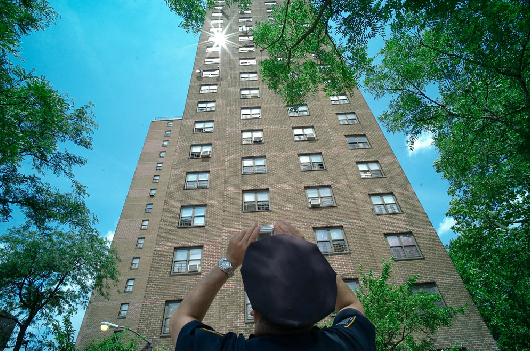
Image: Ángel Franco
Via Lens Blog, New York Times
The above image is a part of a series by photographer Ángel Franco that documents the aftermath of violence, but not in the way you might expect. The series, which is published weekly on Lens, the New York Times documentary photography blog, is filled with images that are haunting in large part because of what is not shown.
The images in Franco's series, At the Sirens' End, are all shot in New York City. Each is accompanied by a minimalist caption; the image above, for example, is captioned, "A woman fell--or was pushed--from a 15th floor window in the Mitchel Houses" (Lens). These captions provide context for what might otherwise be a mysterious, if unsettling, scene. Because this image is a close-up shot that eliminates any surrounding officers or crime scene tape, the gravity of the situation may only set in after careful observation. Rather than focusing on the spectacle of a deceased or grieving body, Franco draws out a strange emptiness by portraying a stranger's relation to the event. The image below, which captures a young girl moving toward the scene of a fatal car accident, has a similar effect.
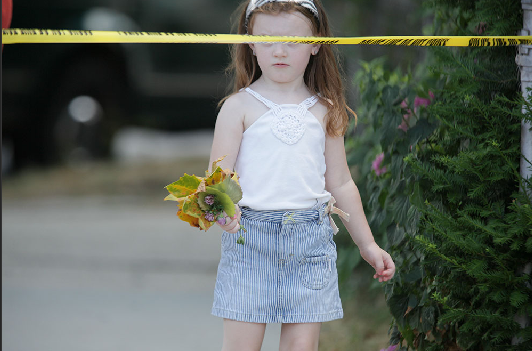
Image: Ángel Franco, via Lens
"A young girl tries to catch a glimpse of the scene of a fatal car accident."
In obscuring the identities of both police officer and child, the images place the observer in an even more distant relation: a stranger watching strangers. The violence that the images allude to plays out not on the bodies of victims, but on the bodies of bystanders who encounter the event through daily life, and thus observers access the event through its traces.
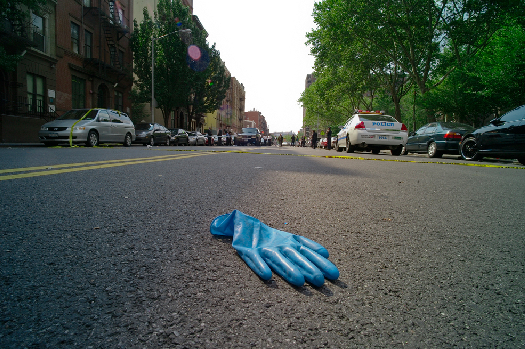
Image: Ángel Franco, via Lens
"Left behind after a shooting July 21 on East 132nd Street in Manhattan."
These images are especially interesting when considered in relation to one of Franco's previous projects. From 1979 to 1984, Franco worked with the officers of the 46th Precinct in the Bronx, where, at the time, "a murder occurred every five days on average" (Lens). These images often show victims and perpetrators, and their grittier aesthetic reflects a different relation between bystander and crime. 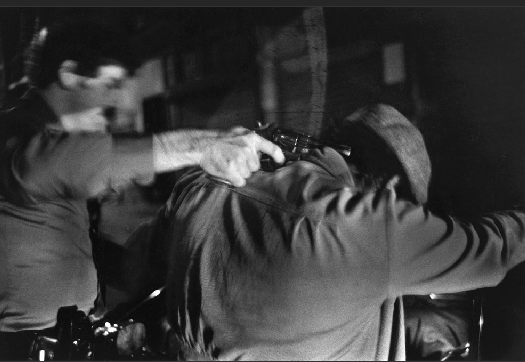
Image: Ángel Franco, via Lens
"An officer holding a gun to a man who had been stopped in his car."
While this image, like Franco's more recent work, withholds eye-to-eye engagement, it is frighteningly intimate. With the officer and suspect dominating the frame, there is little outside space with which to contextualize the violence of the officer's gesture. The image also suggests that this violence is strangely routine; the officer's posture hints at disengagement, as he appears to be using the gun as a management tool to keep the suspect under control while he or someone else investigates.
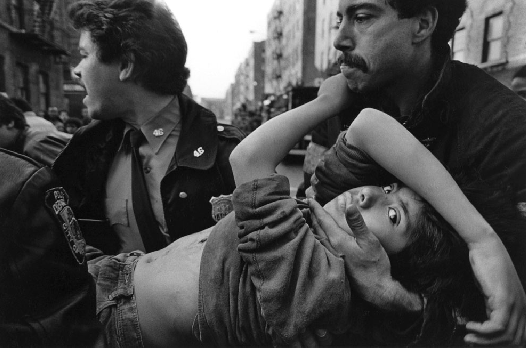
Image: Á
ngel Franco, via Lens"Officers carrying a boy who was caught in a gun fight while riding his bike. Shot in the chest, he survived."
These images could be useful for teaching students about both image analysis and rhetorical situation. You might ask, how are the arguments that the earlier images make specific to a 1970s/1980s crime-ridden neighborhood? How might we explain the visual changes in the later photographs? How can this shift be read as an argument about our changing relationship to violence? In seeing the way this artist's work has changed, students may be able to better grasp the importance of context in argument.
Recent comments
2 years 29 weeks ago
2 years 44 weeks ago
2 years 44 weeks ago
2 years 50 weeks ago
3 years 4 weeks ago
3 years 4 weeks ago
3 years 4 weeks ago
3 years 6 weeks ago
3 years 6 weeks ago
3 years 6 weeks ago